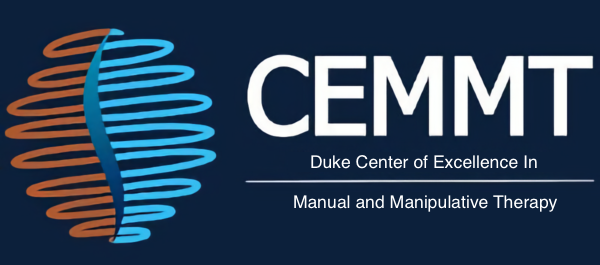Author Names:
Zago, Julio; J, Amatuzzi, Fellipe; Rondinel, Tatiana; Matheus, João Paulo
Reviewer Name:
Kendall Bietsch, SPT
Reviewer Affiliations:
Duke University School of Medicine, Doctor of Physical Therapy Division
Paper Abstract:
Context: The effects of an exercise program (EP) for the treatment of patellofemoral pain syndrome (PFPS) are well known. However, the effects of osteopathic manipulative treatment (OMT) are unclear. Objective: To evaluate the effects of OMT versus EP on knee pain, functionality, plantar pressure in middle foot (PPMF), posterior thigh flexibility (PTF), and range of motion of hip extension in runners with PFPS. Design: This is a randomized controlled trial. Setting: Human performance laboratory. Participants: A total of 82 runners with PFPS participated in this study. Interventions: The participants were randomized into 3 groups: OMT, EP, and control group. The OMT group received joint manipulation and myofascial release in the lumbar spine, hip, sacroiliac joint, knee, and ankle regions. The EP group performed specific exercises for lower limbs. The control group received no intervention. Main Outcome Measures: The main evaluations were pain through the visual analog scale, functionality through the Lysholm Knee Scoring Scale, dynamic knee valgus through the step-down test, PPMF through static baropodometry, PTF through the sit and reach test, and range of motion through fleximetry. The evaluations were performed before the interventions, after the 6 interventions, and at 30-day follow-up. Results: There was a significant pain decrease in the OMT and EP groups when compared with the control group. OMT group showed increased functionality, decreased PPMF, and increased PTF. The range of motion for hip extension increased only in the EP group. Conclusion: Both OMT and EP are effective in treating runners with PFPS.
NIH Risk of Bias Tool:
Quality Assessment of Controlled Intervention Studies
- Was the study described as randomized, a randomized trial, a randomized clinical trial, or an RCT
- Yes
- Was the method of randomization adequate (i.e., use of randomly generated assignment)?
- Yes
- Was the treatment allocation concealed (so that assignments could not be predicted)?
- Yes
- Were study participants and providers blinded to treatment group assignment?
- No
- Were the people assessing the outcomes blinded to the participants’ group assignments?
- Yes
- Were the groups similar at baseline on important characteristics that could affect outcomes (e.g., demographics, risk factors, co-morbid conditions)?
- Yes
- Was the overall drop-out rate from the study at endpoint 20% or lower of the number allocated to treatment?
- Yes
- Was the differential drop-out rate (between treatment groups) at endpoint 15 percentage points or lower?
- Yes
- Was there high adherence to the intervention protocols for each treatment group?
- Yes
- Were other interventions avoided or similar in the groups (e.g., similar background treatments)?
- Yes
- Were outcomes assessed using valid and reliable measures, implemented consistently across all study participants?
- Yes
- Did the authors report that the sample size was sufficiently large to be able to detect a difference in the main outcome between groups with at least 80% power?
- Cannot Determine, Not Reported, or Not Applicable
- Were outcomes reported or subgroups analyzed prespecified (i.e., identified before analyses were conducted)?
- Cannot Determine, Not Reported, or Not Applicable
- Were all randomized participants analyzed in the group to which they were originally assigned, i.e., did they use an intention-to-treat analysis?
- Cannot Determine, Not Reported, or Not Applicable
Key Finding #1:
Both osteopathic manipulative treatment (OMT) and exercise programs (EP) are effective in reducing knee pain in runners with patellofemoral pain syndrome (PFPS).
Key Finding #2:
While OMT had greater effects on plantar pressure in middle foot (PPMF), dynamic knee valgus (DKV), and hip extension ROM compared to the EP, its effect sizes were not clinically significant for patients. Thus, there were no differences in results between the osteopathic manipulative treatment and exercise program (EP) interventions.
Key Finding #3:
Assessing for PPMF, DKV, and hip extension ROM may be useful in identifying individual etiological factors that cause PFPS.
Reviewer Summary:
This randomized controlled trial compared the effectiveness between osteopathic manipulative treatment (OMT) versus exercise for improving knee pain and functionality in runners diagnosed with patellofemoral pain syndrome (PFPS). The OMT consisted of joint thrusts of the lumbosacral spine and/or hip, sacroiliac joint, knee, and ankle with high-velocity low-amplitude (HVLA) techniques, combined with myofascial release. The exercise program (EP) consisted of strengthening exercises targeting hip flexion, hip adduction, hip abduction, hip external rotation, hip extension, knee extension, squats, and side-stepping with resistance bands. The EP also included passive stretching of the hamstrings, iliotibial tract, and plantar flexors. Despite the differences in intervention, this study found that both the OMT group and the EP group had significantly improved knee pain associated with PFPS, with no clinically significant differences between the two groups. Therefore, the authors recommend the use of both OMT or EP to treat runners with PFPS. Future studies are recommended for the combined use of OMT and EP in runners with PFPS.
Clinical Interpretation of the Paper:
This study shows that both OMT and EP significantly improve pain and functionality in runners with PFPS, but that there are no clinically significant differences between OMT and EP. Because there are no differences between OMT and EP, and they are equally clinically effective, this impacts clinical practice by allowing the physical therapist’s or the patient’s preference to dictate which form of intervention to use: OMT or EP. If a patient prefers exercise over manipulation techniques, a therapist can use the results of this study to create an exercise program tailored to strengthening the hip posterolateral and knee extensor musculature to improve the patient’s symptoms. However, if the patient preferred OMT rather than exercise, the therapist could implement the joint thrust manipulations with HVLA techniques and myofascial release. Giving the patient the option to choose their form of intervention provides them with more autonomy, and has the potential to improve the therapeutic relationship between the patient and the clinician.
